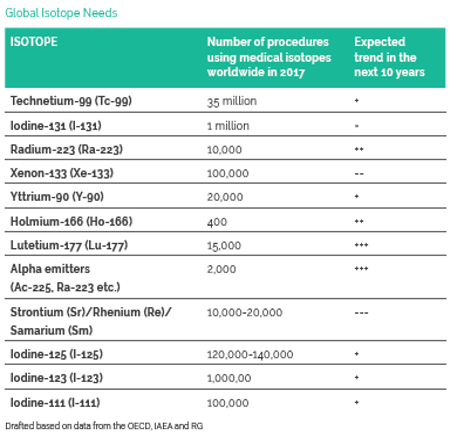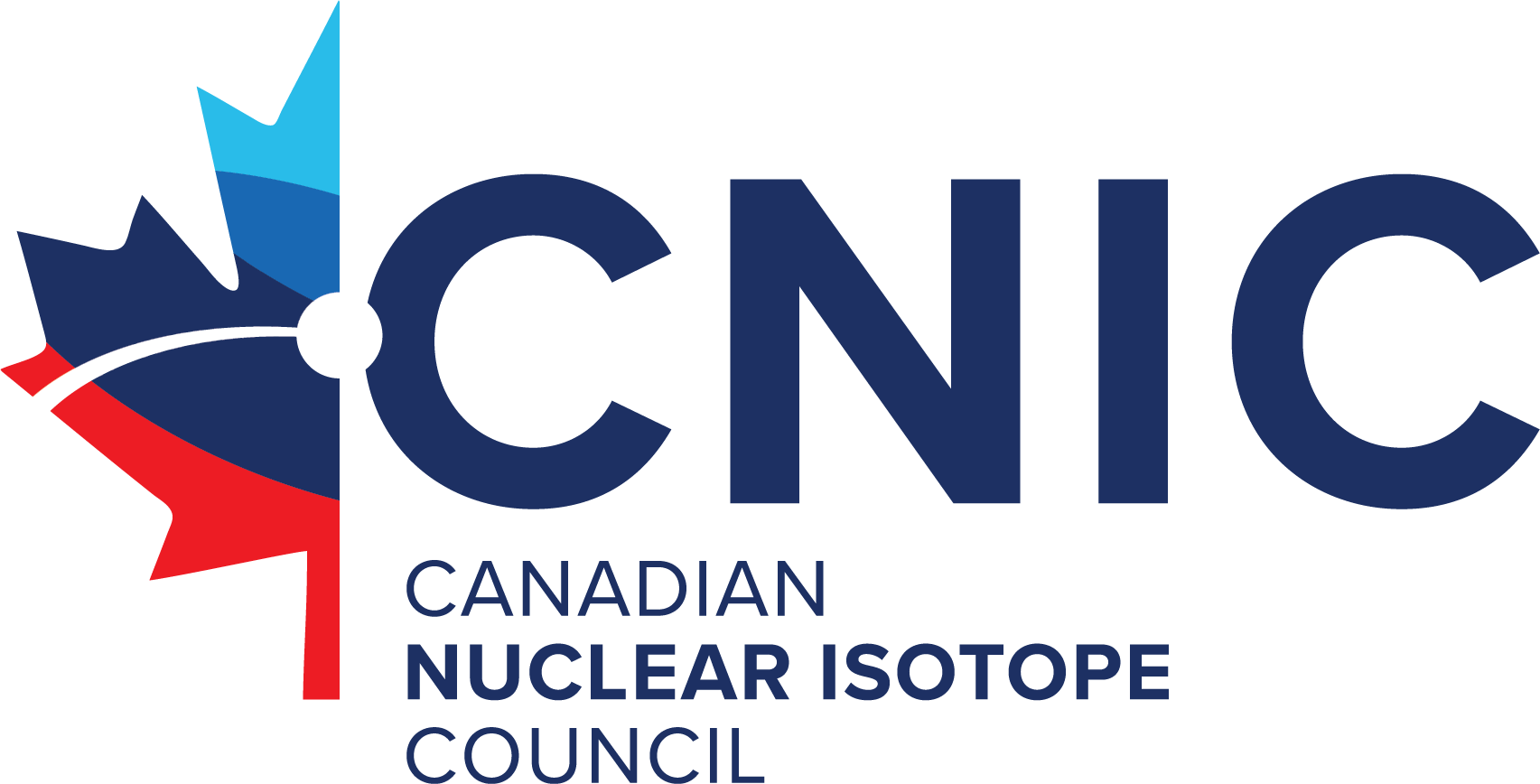Medical Isotopes in Canada
What is a medical isotope?
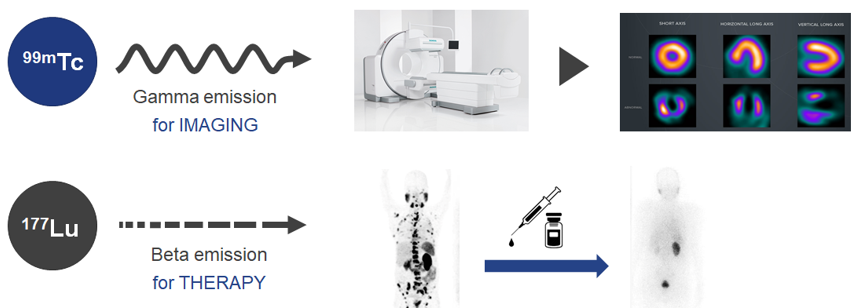
An isotope that emits radiation that is used to diagnose or treat disease
Isotopes are atoms that have the same number of protons as each other, but different numbers of neutrons. There are both stable and non-stable isotopes, of which the unstable forms exhibit characteristic radioactive decay via electromagnetic (gamma) or particulate (alpha, beta, Auger, etc.) emission.
What is half-life?
Each isotope also has its own unique “half-life”: the time it takes for half of the atoms to undergo radioactive decay. A radioactive half-life (t½) can range in duration from nanoseconds to hundreds of thousands of years. Isotopes can be produced by both reactors and cyclotrons. These methods are complementary.
REACTOR PRODUCED
- Technetium-99m
- Iodine-125
- Iodine-131
- Lutetium-177
- Radium-223
- Yttrium-90
- Holmium-166
CYCLOTRON PRODUCED
- Fluorine-18
- Iodine-123
- Palladium-103
- Copper-64
- Zirconium-89
- Indium-111
- Technetium-99m
- Carbon-11
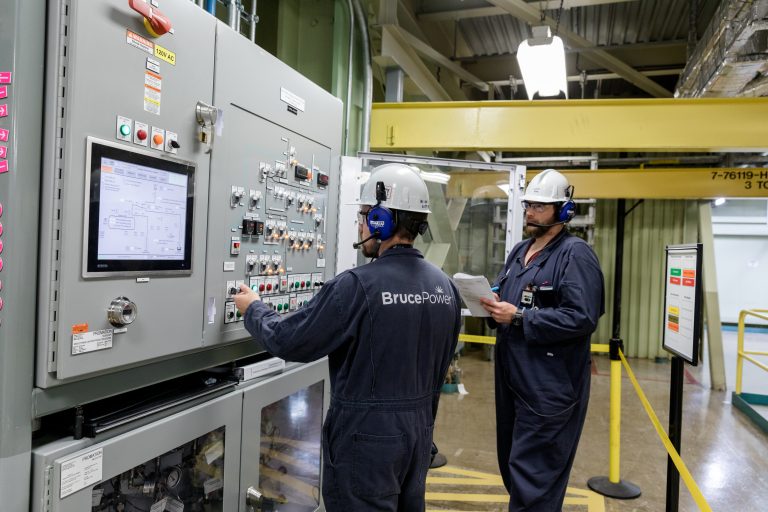
Medical Isotope Production Chain
Stable Isotopes are irradiated (neutron activation) at an irradiation source (cyclotron, accelerator or reactor) to create the radioactive material
The isotopes are then “harvested” and sent to an isotope processor
The isotope processor purifies the radioactive isotope according to good manufacturing practices to produce a pharmaceutical grade material
The pharmaceutical material is then delivered to a hospital where it is used to treat the patient.
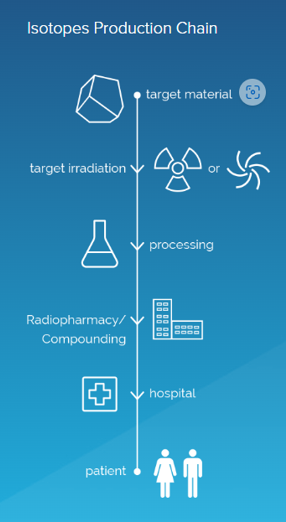
Canadian Isotope Supply Chain
Nearly the complete supply chain for the production, processing and delivery of medical isotopes is represented in Canada
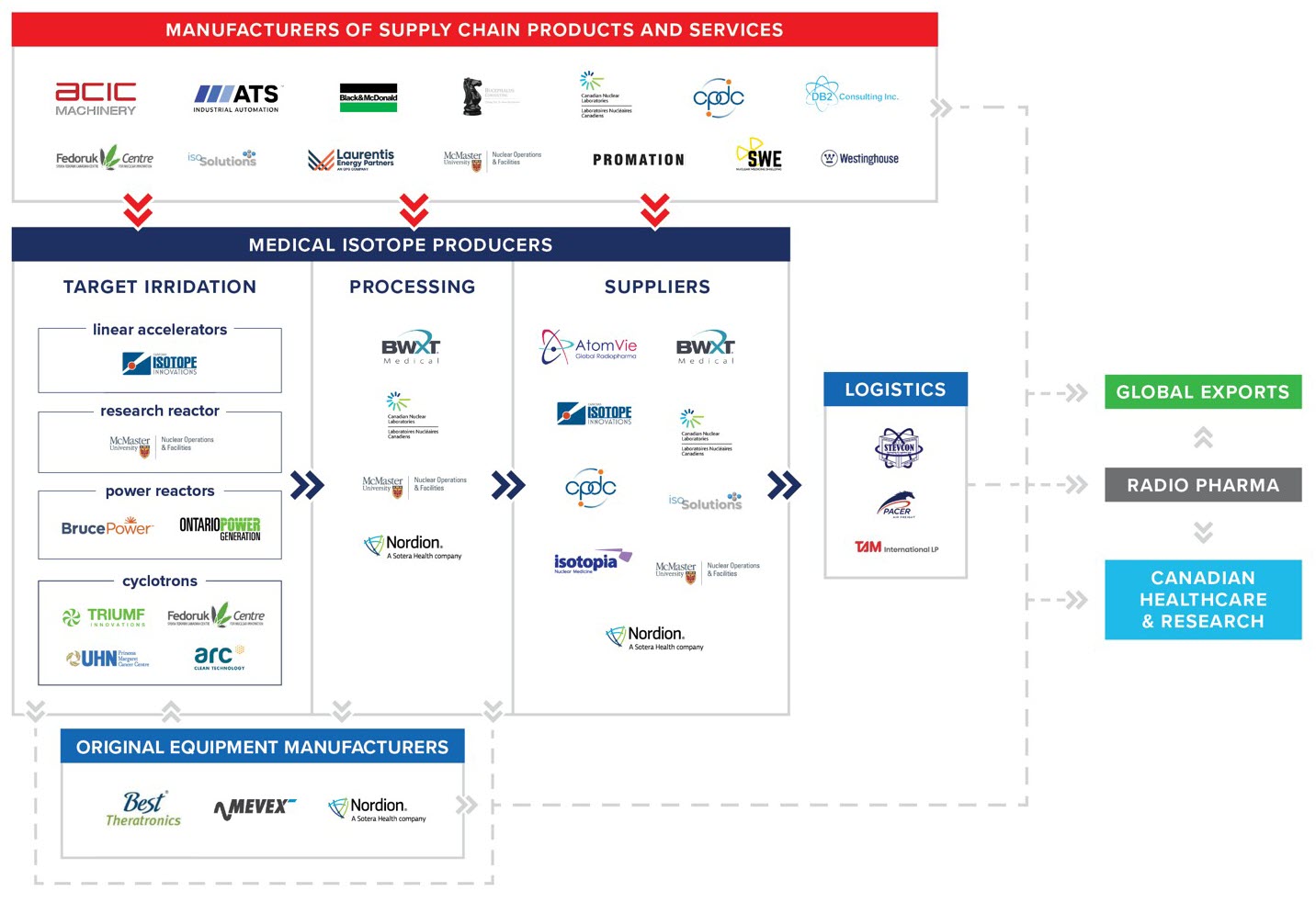
Applications of Isotopes

Sterilization

Diagnostic Imaging

Cancer Treatment

Insect Sterilization

Food Irradiation

Research & Development
Specific Medical Applications
| Ac-225 | Metastatic cancers |
| Lu-177 | Neuroendocrine tumours (but many other promising applications for oncology because of its low energy/low penetration, allowing for more focused delivery to the tumor while preserving normal tissue) |
| Ga-68 | PET imaging scans |
| Co-60 | Brain disease (Gamma Knife) |
| I-131 | Prostate Cancer (permanent brachytherapy), thyroid |
| Ir-192 | Prostate Cancer/Gyne Cancer/Esophageal cancer/GI cancer (brachytherapy) |
| Ra-223 | Prostate Cancer (bone metastases) |
| Y-90 | Primary or metastatic disease to liver |
| F-18 | PET imaging scans |
Strategic Priority for Canada
A major driver for the market growth of isotopes is their use in accurate diagnosis, imaging and treatment solutions.
It is estimated that the nuclear medicine market will see 15% growth per year until 2026. By 2031, the market will reach between $14-$33 billion US (MEDraysintell, 2021)
In 2013, therapeutics represented just 6% of the nuclear medicine market but grew to 20% in 2019. Therapeutics are projected to represent 75% of the $33 billion market in 2031.
